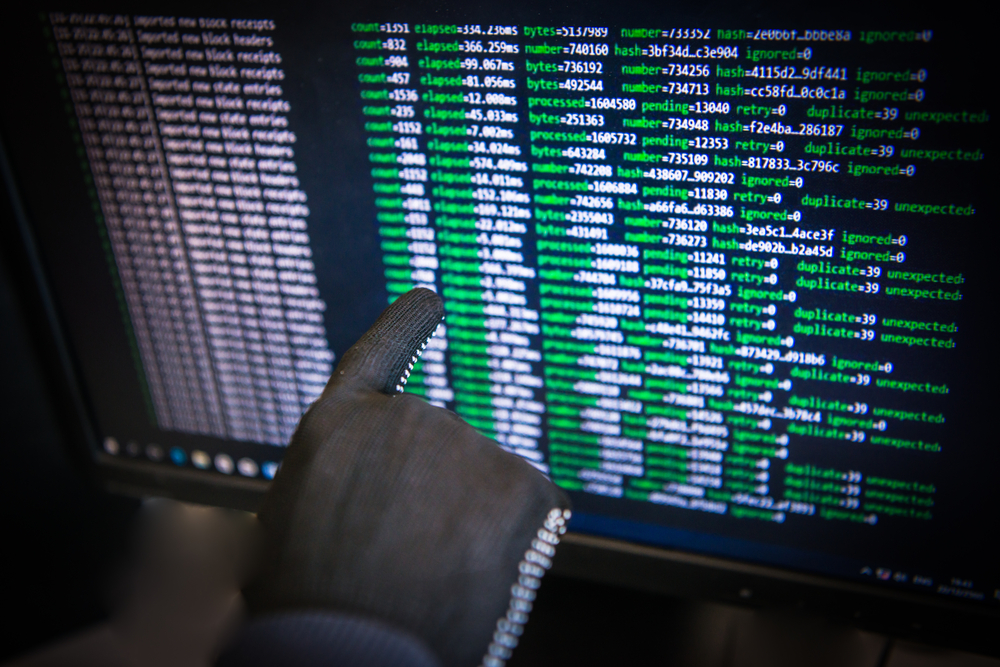When you think of the world of cryptocurrency, you might imagine a digital gold rush, where fortunes are made overnight and innovation knows no bounds. But like any frontier, the crypto landscape is rife with dramatic tales that range from the bizarre to the downright catastrophic. Navigating this world demands not just a hopeful investment spirit but a keen awareness of its pitfalls. Here, we dive into 12 crypto disasters that you might find hard to believe actually happened. Buckle up, because the truth is stranger than fiction.
1. The Mt. Gox Meltdown

One of the earliest, and perhaps most infamous, disasters in the crypto world was the collapse of Mt. Gox. At its peak, Mt. Gox handled about 70% of all Bitcoin transactions worldwide. However, in 2014, it abruptly declared bankruptcy after announcing it had lost 850,000 Bitcoins, worth half a billion dollars at the time. It turned out that this loss was a result of a massive, prolonged hack that had gone undetected for years. As Peter Vessenes, co-founder of the Bitcoin Foundation, remarked, the Mt. Gox scandal served as a stark reminder of the vulnerabilities inherent in the crypto space.
The fallout from the Mt. Gox debacle was profound, sending shockwaves through the crypto community and beyond. For many people, it was their first experience with the harsh realities of digital asset security. Lawsuits followed, and investigations revealed glaring weaknesses in the exchange’s security protocols and management. The incident also led to increased calls for regulation in the largely unregulated world of cryptocurrency exchanges. It was a wake-up call, prompting both investors and exchanges to prioritize security measures.
2. The Bitfinex Hack Of 2016

In 2016, Bitfinex, one of the world’s largest Bitcoin exchanges, suffered a devastating hack that resulted in the loss of approximately 120,000 Bitcoins. The sheer scale of the heist, valued at around $72 million at the time, sent shockwaves through the crypto market. This breach was significant not just because of the amount stolen but also due to the sophisticated methods employed by the hackers. They bypassed multi-signature security measures, which were considered state-of-the-art at the time. The hack led to a temporary halt in trading, a sharp drop in Bitcoin’s value, and a restructuring of Bitfinex’s financial operations.
Bitfinex attempted to compensate its users through a token issuance, promising future redemption. This move was a novel approach to addressing the crisis, but it was met with mixed reactions from the community. While some praised the transparency and effort to repay victims, others criticized it as inadequate. The incident highlighted the inherent risks in centralized exchanges, even those with seemingly advanced security protocols. It also sparked discussions about the need for decentralized solutions in the crypto ecosystem.
3. The DAO Debacle

The DAO, a decentralized autonomous organization built on the Ethereum blockchain, was one of the most ambitious projects in the crypto world. Launched in 2016, it aimed to create a venture capital fund that was governed by smart contracts and community voting. However, the DAO’s code contained a vulnerability that was exploited by an attacker, siphoning off $60 million worth of Ether. In a controversial move to remedy the situation, Ethereum’s developers executed a hard fork to reverse the theft. According to crypto expert Emin Gün Sirer, this decision exposed the tension between decentralization ideals and practical governance needs.
The DAO hack and subsequent fork led to the creation of Ethereum Classic, as some community members refused to support the fork. This event marked a crucial moment in Ethereum’s history, underscoring the importance of security audits and the challenges of on-chain governance. It also sparked debates about the immutability of blockchain technology. For many, it was a lesson in the complexities of smart contract deployments and the potential repercussions of coding errors. The DAO incident has since served as a case study for future decentralized projects.
4. The QuadrigaCX CEO Mystery

QuadrigaCX was once Canada’s largest cryptocurrency exchange, but it collapsed spectacularly under mysterious circumstances. In 2018, the company’s CEO, Gerald Cotten, reportedly died suddenly while on a trip to India, taking with him the only known passwords to access about $190 million in customer funds. The situation quickly spiraled into a mystery as investigators struggled to verify the circumstances of Cotten’s death and the whereabouts of the missing funds. Subsequent investigations uncovered evidence of fraudulent activities and mismanagement within the exchange. Cotten’s death and the ensuing chaos left about 76,000 users in turmoil.
The QuadrigaCX scandal raised significant concerns about the lack of regulatory oversight in the crypto industry. It highlighted the risks of entrusting large sums to exchanges that might lack the necessary safeguards. For affected users, the incident underscored the importance of personal responsibility in safeguarding digital assets. Regulators globally took note, with some pushing for stricter controls on crypto exchanges to prevent similar occurrences. The incident remains a chilling reminder of how quickly trust can be eroded in the absence of transparency.
5. The Silk Road Shutdown

The Silk Road was a notorious online marketplace that operated on the dark web, facilitating the sale of illegal goods using Bitcoin. In 2013, the FBI shut down the site, and its operator, Ross Ulbricht, was arrested and later sentenced to life in prison. The closure of Silk Road had far-reaching implications for Bitcoin, exposing its use in illicit activities and prompting a public relations crisis. According to a 2013 study by Nicolas Christin from Carnegie Mellon University, Silk Road accounted for a significant portion of Bitcoin transactions at the time. This event forced the crypto community to confront the darker aspects of digital currencies.
The Silk Road saga also highlighted the potential for digital currencies to enable privacy and autonomy, albeit with risks of misuse. While it tarnished Bitcoin’s reputation for a while, it also spurred efforts to develop and promote more legitimate use cases for cryptocurrencies. The case illustrated the challenges of balancing privacy with compliance in the crypto space. It also emphasized the need for greater awareness and education around the potential applications and implications of blockchain technology. Despite its controversial nature, Silk Road’s story remains a pivotal chapter in the history of cryptocurrency.
6. The Parity Wallet Freeze

In 2017, another major mishap struck the Ethereum network when a developer accidentally triggered a bug in the Parity multi-signature wallet code. This mistake resulted in the freezing of about $150 million worth of Ether, rendering it inaccessible. The bug was introduced when Parity attempted to fix a previous vulnerability, highlighting the intricacies of smart contract programming. The freeze affected many users and projects who had entrusted their funds to Parity’s wallet solution. The incident showcased the risks associated with complex smart contracts and the potential for human error in software development.
The Parity freeze raised questions about the responsibilities of developers in the decentralized ecosystem. It also prompted discussions on the limits of Ethereum’s code-is-law philosophy, as affected users demanded solutions to retrieve their funds. Although some proposed a hard fork to recover the frozen assets, the community decided against it, valuing the sanctity of the blockchain’s immutability. For developers, the incident underscored the importance of rigorous testing and peer reviews of smart contract code. It also served as a cautionary tale about the challenges of building secure decentralized applications.
7. The NiceHash Breach

In December 2017, NiceHash, a popular cryptocurrency mining marketplace, experienced a major security breach. Hackers managed to steal approximately 4,700 Bitcoins, valued at around $64 million at the time. The breach highlighted significant security flaws in NiceHash’s infrastructure and prompted a review of security practices across the industry. According to Chris Kline, COO of Bitcoin IRA, the breach underscored the need for enhanced security measures and user awareness in handling digital assets. The NiceHash incident served as a wake-up call for both users and service providers to prioritize cybersecurity.
Following the breach, NiceHash suspended operations temporarily to investigate the incident and implement security improvements. They eventually resumed services and pledged to reimburse affected users, although this process took considerable time. The breach also spurred discussions about the inherent vulnerabilities of centralized platforms in a decentralized ecosystem. For users, it was a stark reminder of the importance of personal security practices, such as enabling two-factor authentication and using hardware wallets. The NiceHash breach remains a cautionary tale about the constant threats lurking in the crypto world.
8. The Bitcoin Gold Attack

In 2018, Bitcoin Gold, a Bitcoin fork, suffered a series of “51% attacks” that resulted in the theft of over $18 million. This type of attack occurs when a single entity gains control of more than half of a blockchain’s computing power, allowing them to double-spend coins. Bitcoin Gold’s relatively low hash rate made it vulnerable to such an attack, exposing the risks that smaller cryptocurrency projects face. The attack led to a significant loss of trust in Bitcoin Gold and raised concerns about the security of smaller blockchain networks. It also prompted discussions about the feasibility and ethics of forking existing blockchains.
The aftermath of the attack saw Bitcoin Gold implementing new security measures and attempting to reassure its community. However, the incident had already caused significant damage to its reputation and value. The attack also highlighted the challenges that smaller blockchains face in attracting sufficient mining power to secure their networks. For the wider crypto community, it emphasized the importance of evaluating a project’s security and infrastructure before investing. The Bitcoin Gold attack serves as a reminder of the vulnerabilities inherent in decentralized networks that lack robust security protocols.
9. The Cryptopia Collapse

Cryptopia was a New Zealand-based cryptocurrency exchange that became the victim of a major hack in January 2019. The breach resulted in the theft of approximately $16 million worth of cryptocurrencies, and the exchange was unable to recover from the financial blow. Cryptopia’s collapse was a stark reminder of the importance of security and the potential consequences of mismanagement. The exchange initially attempted to resume operations, but it eventually shut down and entered liquidation. Users were left in the lurch, facing a lengthy and complex process to reclaim their lost funds.
The Cryptopia incident underscored the fragility of many crypto exchanges and the risks users face when entrusting their assets to third parties. It also highlighted the need for robust regulatory frameworks to ensure the security and solvency of exchanges. For users, it was a harsh lesson in the importance of due diligence and the risks of keeping significant holdings on exchanges. Cryptopia’s collapse has since fueled calls for greater transparency and accountability in the crypto industry. It remains a cautionary tale for both investors and service providers.
10. The Pancake Bunny Exploit

In May 2021, Pancake Bunny, a decentralized finance (DeFi) protocol on the Binance Smart Chain, suffered an exploit that resulted in a $45 million loss. The attacker used a flash loan to manipulate the price of the platform’s native token and drain funds. The incident highlighted the vulnerabilities of DeFi protocols, which are often targeted due to their open and permissionless nature. Pancake Bunny’s team quickly announced a compensation plan for affected users, but the damage to the platform’s reputation had already been done. This event underscored the need for rigorous security audits and robust risk management strategies in the DeFi space.
The Pancake Bunny exploit also sparked a broader conversation about the risks and rewards of participating in DeFi. While the sector offers innovative financial products and potential high returns, it is also fraught with risks that traditional finance does not present. The incident served as a wake-up call for users to carefully evaluate the protocols they engage with and the security measures in place. It also highlighted the importance of community involvement in the development and oversight of DeFi projects. As the DeFi space continues to evolve, the lessons from the Pancake Bunny exploit remain relevant to both developers and users.
11. The Poly Network Heist

In August 2021, the Poly Network, a decentralized finance platform, experienced a massive security breach where an attacker stole over $600 million in cryptocurrencies. In an unexpected turn of events, the hacker, who identified as “Mr. White Hat,” returned the stolen assets, claiming their actions were meant to highlight vulnerabilities. This incident drew widespread attention and sparked debates about the ethics of white hat hacking and the security of DeFi platforms. Poly Network worked closely with the hacker to secure the funds and implement security enhancements. The event underscored the ongoing challenges of securing decentralized platforms and the potential for unconventional resolutions in the crypto space.
The Poly Network heist revealed the fragile nature of trust in the decentralized finance ecosystem. It also raised questions about the effectiveness of existing security protocols and the need for continuous improvement. For users, the incident highlighted the importance of vigilance and the inherent risks of participating in DeFi. The event also served as a catalyst for discussions about the role of ethical hackers in identifying and mitigating security threats. Despite the positive outcome, the Poly Network heist remains a stark reminder of the complexities and risks in the rapidly growing DeFi landscape.
12. The Ronin Network Hack

In March 2022, the Ronin Network, a blockchain platform tied to the popular game Axie Infinity, suffered one of the largest crypto heists in history. Hackers exploited a vulnerability in the network to steal over $600 million in various cryptocurrencies. The breach exposed significant security lapses in the network’s infrastructure, leading to a temporary shutdown. The incident sent shockwaves through the gaming and crypto communities, raising concerns about the security of blockchain-based games. Despite efforts to recover the stolen funds and reinforce security measures, the Ronin Network hack remains a cautionary tale about the risks of integrating blockchain technology with gaming.
The Ronin Network hack highlighted the vulnerabilities that can arise when blockchain technology is used in gaming and other applications. It also underscored the importance of robust security measures and continuous monitoring in safeguarding digital assets. For the gaming community, the incident served as a wake-up call about the potential risks and challenges of blockchain adoption. The hack also prompted discussions about the need for stronger security protocols and industry collaboration to prevent similar incidents. Despite the setback, the lessons from the Ronin Network hack continue to inform the evolving landscape of blockchain gaming.
This article is for informational purposes only and should not be construed as financial advice. Consult a financial professional before making investment or other financial decisions. The author and publisher make no warranties of any kind.






